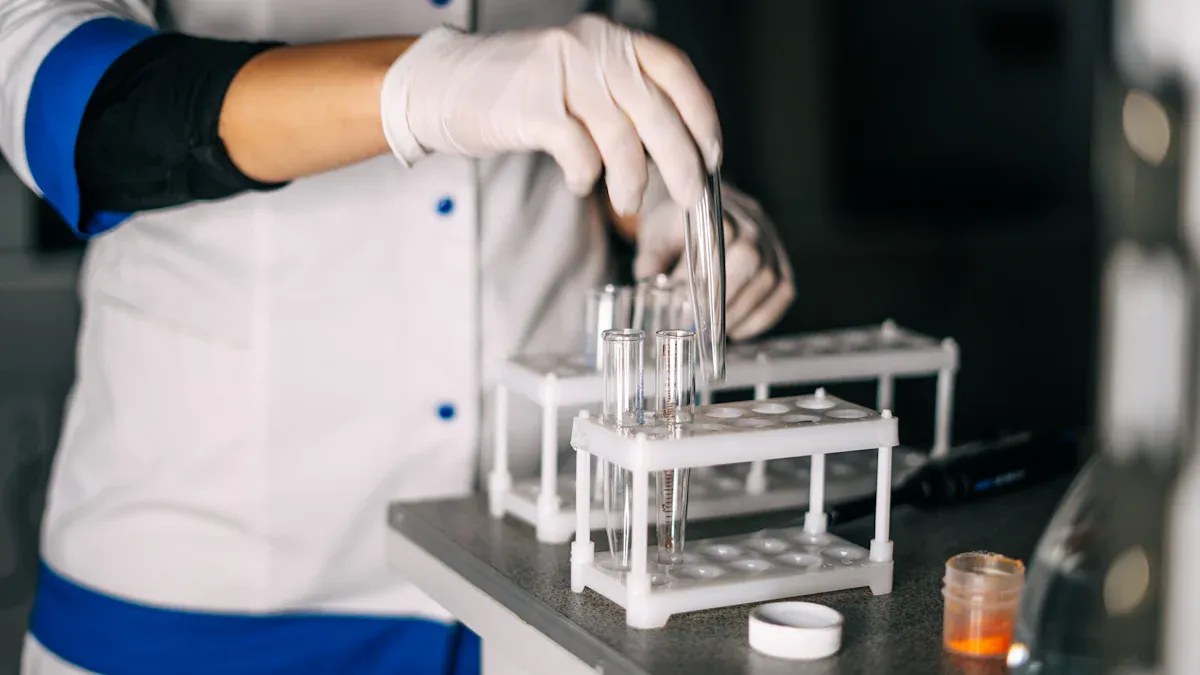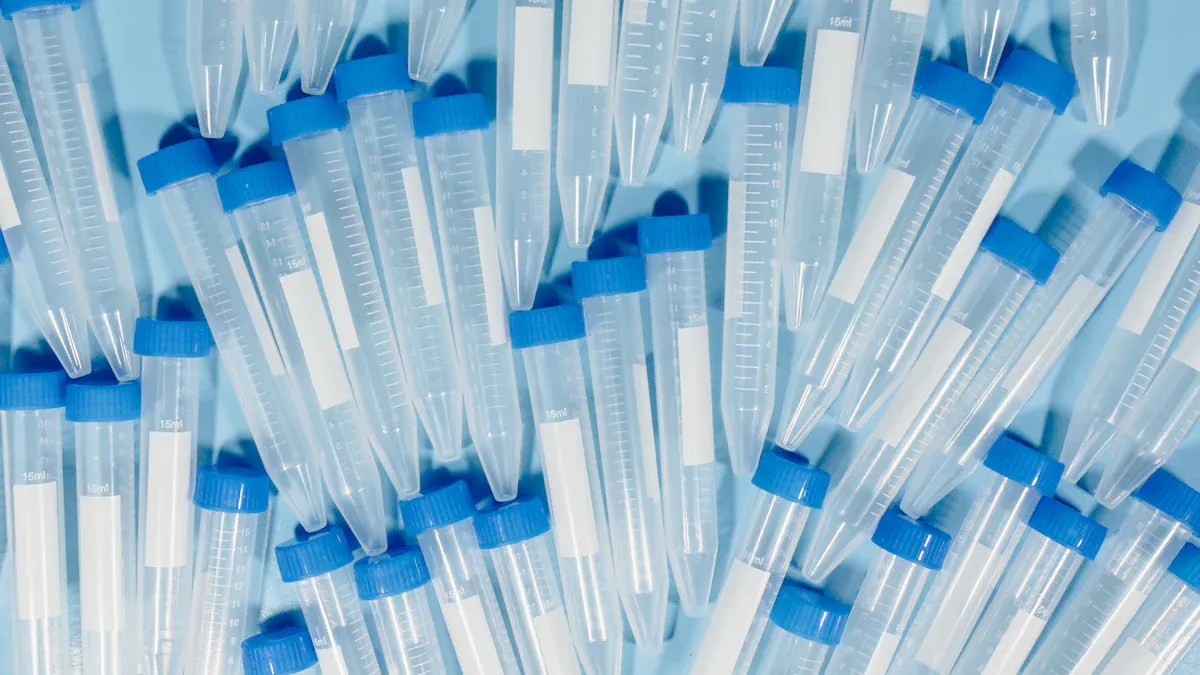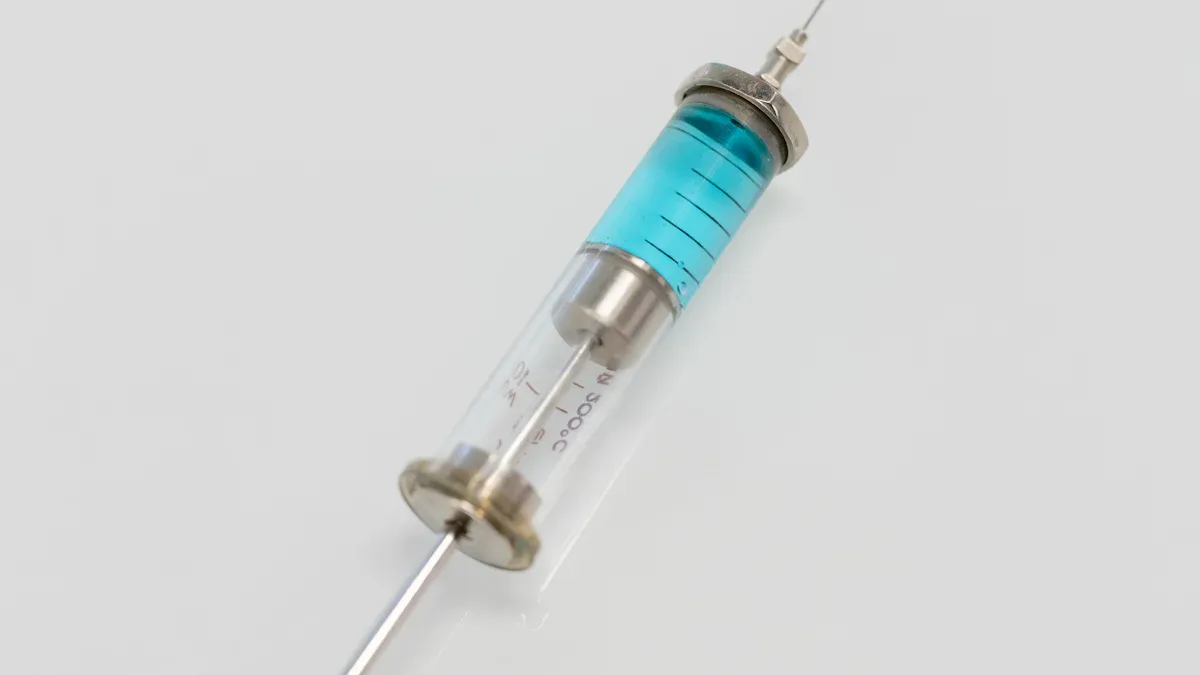What Makes Ra <0.1μm Surface Roughness in Medical Nitinol Tubing Essential

Surface roughness, specifically medical nitinol tubing Ra <0.1μm surface roughness, indicates how smooth a surface is. In the context of medical nitinol tubing, achieving this very smooth finish is crucial. Smoother surfaces reduce friction, enhance compatibility with the body, and improve overall performance. For instance, low-friction materials like UHMW-PE facilitate easier movement in joint replacements and extend their lifespan. Additionally, surfaces with medical nitinol tubing Ra <0.1μm surface roughness minimize swelling and immune responses, ensuring the stability of implants. These characteristics underscore the importance of Ra <0.1μm surface roughness for patient safety and the reliability of medical devices.
Key Takeaways
Ra <0.1μm surface roughness makes nitinol tubing very smooth. This lowers friction and helps devices work better.
Electropolishing is the main way to make surfaces super smooth. It makes medical devices safer and work well.
Smooth surfaces reduce risks like blood clots and infections. This keeps patients safer.
Tubing with Ra <0.1μm lasts longer. Smooth surfaces resist damage and rust.
Learn about new surface finishing methods to pick the best nitinol tubing for medical use.
Understanding Medical Nitinol Tubing Ra <0.1μm Surface Roughness
What is Ra <0.1μm, and how is it measured?
"Ra <0.1μm" means the surface is very smooth. It measures the average height of bumps and dips on the surface in micrometers (μm). Medical nitinol tubing with Ra <0.1μm has almost no rough spots.
Special tools like profilometers or atomic force microscopes check the surface. These tools scan and give detailed information about how smooth it is. Smooth surfaces are important to meet strict medical rules. They help the tubing work better and fit safely inside the body.
Why is surface roughness important in medical-grade nitinol tubing?
Smooth surfaces make medical tubing safer and more effective. Less friction helps devices like stents and catheters move easily without hurting tissues. Smooth tubing also stops blood from sticking, which can prevent clots.
Electropolishing is used to make surfaces smoother. This process removes rough spots and lowers nickel ion release, making the tubing safer for the body. Studies show electropolished surfaces work better with blood, making them great for medical use. Below is a table showing how electropolishing improves tubing:
Performance Metric | Description |
|---|---|
Electropolishing | Creates smooth surfaces, reduces nickel release, improves safety with blood and tissues. |
Surface Quality | Lowers friction, stops blood from sticking, and helps the tubing work better with tissues. |
Research shows smooth surfaces resist corrosion better. Rough spots can cause damage over time. This is why Ra <0.1μm is needed for safe and reliable medical devices.
Choosing tubing with Ra <0.1μm ensures better results and fewer problems. Companies like AccuPath make top-quality tubing that meets these high standards, making them trusted in healthcare.
Achieving Ra <0.1μm Surface Roughness with Electropolishing

What is electropolishing, and why is it important?
Electropolishing helps make medical nitinol tubing very smooth. This process uses electricity and a special liquid to remove tiny flaws. It takes off a thin layer of material, leaving a shiny, smooth surface. By smoothing out small bumps and dips, electropolishing creates a surface that resists rust and meets strict medical needs.
Research shows electropolishing can make surfaces as smooth as Ra <0.1μm. For example, using 40 volts for 10 seconds gives great results. This process not only makes the tubing look better but also makes it safer for the body. Smooth tubing is important for devices like stents and catheters, where surface quality affects how well they work and keep patients safe.
Steps to achieve ultra-smooth surfaces
Making tubing with Ra <0.1μm smoothness involves key steps. Each step ensures the tubing is safe and high-quality:
Cleaning the tubing: Before polishing, the tubing is cleaned to remove dirt, oil, or other materials. This step prepares the surface for treatment.
Polishing the surface: The tubing is placed in a special liquid, and electricity is applied. This removes rough spots and makes the surface shiny. Studies show this step can cut roughness by half, improving the tubing's quality.
Rinsing and neutralizing: After polishing, the tubing is washed to remove leftover chemicals. This step ensures the tubing is clean and safe for medical use.
Testing the surface: Tools like profilometers check if the surface meets the Ra <0.1μm standard. This step confirms the tubing is smooth and follows medical rules.
When done correctly, these steps create tubing that is smooth, strong, and safe for the body.
How manufacturers ensure quality
Keeping Ra <0.1μm smoothness needs careful checks during production. Manufacturers use several methods to ensure the tubing is perfect:
Frequent surface checks: Tools like profilometers measure smoothness at different stages. This ensures the tubing meets the required standards.
Improving processes: Techniques like electropolishing are adjusted to make surfaces even smoother. Studies show electropolishing removes tiny cracks, making tubing last longer and safer for the body.
Following medical rules: Manufacturers follow strict guidelines to make sure the tubing is safe. Smooth surfaces help prevent problems like blood clots or bacteria buildup.
New methods, like pulse voltage polishing, make electropolishing even better. These advancements help manufacturers meet the demand for high-quality medical nitinol tubing.
Benefits of Ra <0.1μm Surface Roughness in Medical Applications

Enhanced biocompatibility and reduced risk of complications
Medical nitinol tubing with Ra <0.1μm surface roughness helps the body accept devices. Ultra-smooth surfaces work better with tissues, lowering irritation or rejection risks. Devices like stents and catheters cause less harm to nearby tissues because of this smoothness.
Electropolishing makes the tubing very smooth by removing tiny flaws. This process stops harmful ions, like nickel, from being released. It ensures the tubing is safe for long-term use inside the body. Smoother surfaces mean fewer problems and better results for patients.
Improved device performance and longevity
Smooth tubing improves how well medical devices work and last. With Ra <0.1μm surface roughness, there is less friction during use. This helps devices move easily, especially in blood vessels.
Electropolishing also strengthens the tubing by removing weak spots. This lowers the chance of cracks or rust forming over time. Polished tubing makes devices last longer and stay reliable for patients.
Reduced bacterial adhesion and better sterilization outcomes
Ra <0.1μm surface roughness helps stop bacteria from sticking to surfaces. Studies show smoother surfaces, like Ra <0.2μm, prevent biofilm growth. This is important for avoiding infections in medical devices.
Electropolishing creates a smooth, even surface that resists bacteria. It also makes cleaning easier since there are fewer places for germs to hide. Smoother tubing means safer, cleaner medical devices for patients.
Tip: Pick medical nitinol tubing with Ra <0.1μm surface roughness for safer devices and better results.
Challenges and Innovations in Surface Finishing
Technical challenges in achieving Ra <0.1μm in nitinol tubing
Making nitinol tubing with Ra <0.1μm smoothness is hard. The electropolishing process must be exact to fix flaws without weakening the tubing. Different tubing sizes and shapes make it tricky to get even smoothness. Experts must carefully control the liquid and voltage during electropolishing to avoid mistakes like over-polishing.
Keeping quality steady in large production is also tough. Small changes in the process can cause uneven surfaces. Tiny particles during finishing can ruin the smoothness too. These problems need advanced tools and strict quality checks to solve.
Innovations in electropolishing and other surface treatments
New ideas in electropolishing are solving these problems. For example, pulse voltage electropolishing gives better control, making surfaces smoother. Another method, neosanding postprocessing, cuts roughness by 83% for some materials. This could work with electropolishing to make tubing even smoother.
Innovation | Description |
|---|---|
Silicone Base Powder | Makes surfaces very smooth (Ra < 0.1μm), improving looks and use. |
Neosanding Postprocessing | Lowers roughness by 83%, solving production challenges. |
These new methods show how mixing old and new techniques can improve results. Using these ideas, manufacturers can make surface finishing faster and more reliable.
Future trends in medical nitinol tubing production
The future of nitinol tubing is full of exciting changes. AI and machine learning are making production smarter. These tools help predict problems and check quality in real time, keeping results consistent. Custom devices for patients are also becoming popular, using personal data to design unique medical tools.
Other trends include making smaller parts and adding sensors to tubing. These changes fit the need for less invasive surgeries. Better electrochemical methods are also making tubing safer and stronger. As technology grows, manufacturers will keep improving medical tubing for better healthcare.
Note: Knowing these trends helps you pick the best nitinol tubing for your needs.
Getting Ra <0.1μm surface roughness in medical nitinol tubing is very important. This super-smooth surface makes devices safer and work better. It lowers friction, helps the body accept devices, and stops bacteria from sticking. Electropolishing is the main way to make tubing this smooth. It also helps devices like stents and catheters last longer and perform well.
The need for less invasive surgeries and new technology pushes surface finishing forward. Electropolishing meets these needs and adds smart features like sensors for tracking. These changes make patient care better and allow for custom treatments. By improving methods, companies make sure medical nitinol tubing stays safe and useful for many purposes.
Takeaway: Picking tubing with Ra <0.1μm surface roughness leads to safer devices and supports medical progress.
FAQ
What does Ra <0.1μm mean for medical nitinol tubing?
Ra <0.1μm means the tubing has a very smooth surface. It measures the tiny bumps and dips in micrometers. This smoothness helps the tubing work better in the body. It reduces friction, improves performance, and makes it safer for medical use.
Why is electropolishing the preferred method for achieving Ra <0.1μm?
Electropolishing uses electricity to remove tiny flaws on surfaces. This process makes the tubing smooth and resistant to rust. It meets strict medical rules and ensures high-quality results. That’s why it’s great for making safe devices like stents and catheters.
Tip: Pick tubing made with electropolishing for better safety and quality.
How does Ra <0.1μm surface roughness improve patient safety?
Smooth surfaces lower friction and protect tissues during use. They also stop bacteria from sticking and reduce nickel release. This lowers the chance of infections or allergic reactions, keeping patients safer.
Can Ra <0.1μm surface roughness extend the lifespan of medical devices?
Yes, smoother surfaces last longer by resisting rust and wear. Ra <0.1μm removes weak spots, making devices stronger and more reliable. This helps them work well for a longer time.
Are there any challenges in achieving Ra <0.1μm for nitinol tubing?
Yes, making all tubing sizes equally smooth is hard. The electropolishing process must be carefully controlled. Strict checks are needed to meet medical standards and avoid mistakes.
Note: New methods like pulse voltage electropolishing are improving results even more.
See Also
The Process Behind Nitinol Tubing for Healthcare Uses
The Importance of Nitinol Tubing in Modern Medicine
Nitinol Tubing: A Key Component in Minimally Invasive Surgery
Nitinol Tubing's Impact on the Future of Medical Devices
Nitinol Tubing's Contribution to Innovations in Medical Technology

